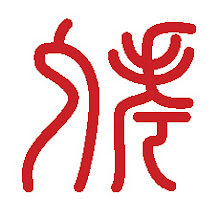Subscribe to:
Post Comments (Atom)
skip to main |
skip to sidebar



"Hsiang (Hsiang Yuan-pien, 1525-1590) was a collector whose enthusiasm sometimes exceeded his judgement. Authentic and rare pieces existed in his collection side by side with mediocre objects and evident fakes."

- Loren Madsen
- I am an artist who has lived in Los Angeles, New York City and, now, northern California. My initial interest in art was provoked by the Asian collection at the Seattle Art Museum when I was in high school, and it has continued to this day. I am not a collector, merely an admirer who has picked up the odd scroll, print or seal. Seals especially have engaged a deep involvement and I welcome this opportunity to share. For my own primarily sculptural works please visit my website lorenmadsen.com.
Links to my other sites
Bookstores/Websites for seals

Some background
While acquiring some Asian art of dubious provenance I found myself admiring the red seals (chops) more than the pictures. I now have about 150. Pecuniary considerations prevent me from acquiring seals of emperors or famous artists. Just as well, as my tastes run to the idiosyncratic and peculiar, a result, I suppose, of my involvment with contemporary art. I find the pugnacious lion below as interesting as the elegant dragon above.
Historically seal impressions are admired as tiny works of art, "the world in a square inch" as the author Jason Kuo says. The writing used in seals (zhuanshu) uses the first uniformly adopted Chinese script (c. 220 BCE) to convey names, ideas and sentiments. The side of the seal frequently carries a poetic verse, a scenic description, the date of the seal's engraving and/or the name of the carver in kaishu which after about 350 CE became (and is called) 'standard script.' So, in very short compass, there is a tight living history of the central Chinese artistic practice, calligraphy.
Originally (and still) seals were made in bronze or jade. For the past 500 years or so the material of choice has been varieties of soapstone known variously as Shou Shan, Mei Ling, Ba Lin and several others. These stones are prized above gems for their beauty. Some seals are plain in form; others are elaborately carved and decorated, frequently making clever use of color transitions in the stone. Ideally a seal will have a balance between the stone itself, carving, side inscriptions and impression.
Because Asian artists used a 'studio name,' usually poetic, to sign their works, their given names can be elusive. A traditional Chinese dating system uses a sixty-year revolving lunar calendar making exact dating a problem also. Where I'm unsure of a character I put in vacant brackets []. I don't speak or read Chinese, but have gotten pretty good at using both zhuanshu and kaishu dictionaries. My thanks to Alan Ho for making up for some of my many deficiencies.
Historically seal impressions are admired as tiny works of art, "the world in a square inch" as the author Jason Kuo says. The writing used in seals (zhuanshu) uses the first uniformly adopted Chinese script (c. 220 BCE) to convey names, ideas and sentiments. The side of the seal frequently carries a poetic verse, a scenic description, the date of the seal's engraving and/or the name of the carver in kaishu which after about 350 CE became (and is called) 'standard script.' So, in very short compass, there is a tight living history of the central Chinese artistic practice, calligraphy.
Originally (and still) seals were made in bronze or jade. For the past 500 years or so the material of choice has been varieties of soapstone known variously as Shou Shan, Mei Ling, Ba Lin and several others. These stones are prized above gems for their beauty. Some seals are plain in form; others are elaborately carved and decorated, frequently making clever use of color transitions in the stone. Ideally a seal will have a balance between the stone itself, carving, side inscriptions and impression.
Because Asian artists used a 'studio name,' usually poetic, to sign their works, their given names can be elusive. A traditional Chinese dating system uses a sixty-year revolving lunar calendar making exact dating a problem also. Where I'm unsure of a character I put in vacant brackets []. I don't speak or read Chinese, but have gotten pretty good at using both zhuanshu and kaishu dictionaries. My thanks to Alan Ho for making up for some of my many deficiencies.
The first (bottom) post here is a list of recommended books.


No comments:
Post a Comment